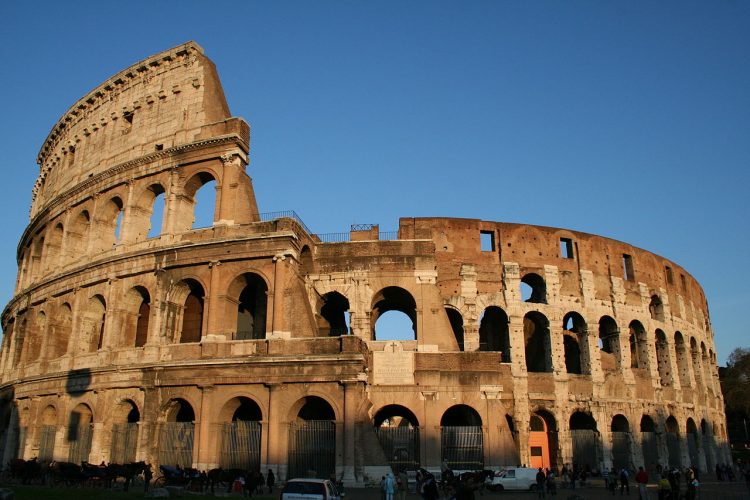Anyone with a cursory knowledge of Roman history knows 476 as the year the Western Roman Empire fell. That was when Odoacer, a barbarian military commander serving in the Roman army, deposed Romulus Augustulus and declared himself King of Italy, ending a thousand years of Roman rule in the west. Although Roman emperors continued to rule in Constantinople, never again would Italy raise up another emperor.
For all the momentousness the history books give this moment, the people of the time received the news with a shrug. To contemporary Italians, nothing had changed: they were Romans and their civilization was Roman; as long as both existed, so too did Rome. The laws and customs that governed their day-to-day life remained mostly unchanged—even the Senate, that ancient institution that defined the Roman polity even during the imperial era continued to exist and function.

Nor was this only the case in Italy. In Gaul, a rump state continued to hold out for another ten years against the invading Franks, its leaders styling themselves “Kings of the Romans.” Even after the Franks overran this last holdout, the Latin-speaking descendants of Roman citizens continued to maintain their old customs and the aristocracy continued to use the title Senator. A similar situation existed in Spain, where the Hispano-Roman aristocracy served under Visigothic kings while remaining culturally distinct. Cities and church properties especially continued to be governed as if nothing had changed from earlier centuries.
Empire Uninterrupted
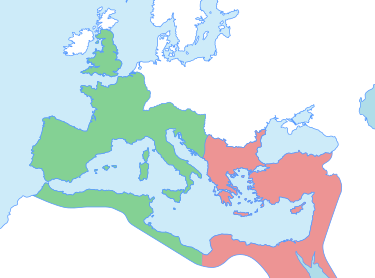
But even in a formal sense, Italy was still subject to Roman rule. To understand how, we must go back to the year 395, when Theodosius I died, the last emperor to rule a united Roman Empire. He was succeeded by his two sons, Arcadius and Honorius, who divided their rule between the eastern and western halves of the empire, respectively. There was an important technicality in this: Arcadius was emperor in the east, not of the east; likewise with Honorius in the west. Both of them were emperors of the whole empire, they just divided responsibility. As it happened, that arrangement proved so stable that the two halves became de facto separate entities, each maintaining separate lines of imperial succession. Legally speaking, however, they remained one empire.
So when Odoacer deposed Romulus Augustulus, he had the Roman Senate send the imperial insignia to Emperor Zeno in the east, thereby reuniting imperial authority in a single person. This arrangement was favorable to Odoacer, as Constantinople was far off, allowing him to rule virtually independently in the emperor’s name. Zeno granted him the title patrician, and Odoacer granted himself the title king, claiming dominion over all of Italy. Both in the technical and in the quotidian sense, Rome persisted in the west.
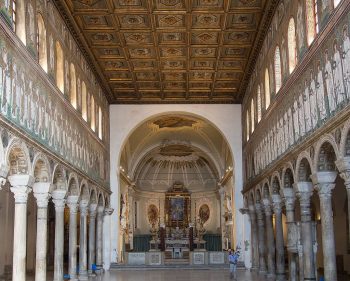
Perhaps not surprisingly, Odoacer became increasingly disloyal to Constantinople, abusing his de facto independence. Zeno therefore encouraged the Ostrogothic king Theoderic to invade Italy in his name. Theoderic defeated Odoacer, slew him, and assumed his royal title. Following precedent, he then reigned in the name of the emperor in Constantinople. A generation later, Justinian would intervene yet again, sending an army to overthrow Theoderic’s successors and establish direct Roman rule. His generals succeeded brilliantly, and by 554 the entire Italian peninsula was firmly under Constantinople’s control. This is commonly presented as a reconquest, but from the perspective of Constantinople, it was simply putting down a disobedient vassal within the undivided empire.
So in what sense did the Western Roman Empire fall in 476? It only ceased to exist in the sense that there was no longer an emperor ruling in the west. By that definition, it had also ceased to exist from the time of Constantine until Honorius, and after 476, Italy continued to have an emperor formally recognized by the Roman Senate itself.
Technically, one might say that the Western Roman Empire had come to an end since rule was no longer divided between the two halves of the empire. That is not, of course, what is usually claimed. Instead it is argued that Zeno’s rule was purely a formality; his vassal kings, whether Odoacer or Theoderic, ruled as they pleased, only paying lip-service to Constantinople. But by that standard, the Western Roman Empire had ceased to exist long before Romulus Augustulus. The last several emperors in the west were weak puppets, subject to the wills of the various barbarian kings and military commanders who put them in power; they had long ceased exercising any real authority.
Rome as the Romans Saw It
How did the endlessly-vexed Italians see things? They were well aware that they were subject to barbarian rulers, yet they maintained their own customs and culture. As the descendants of Romans of old, they still saw their civilization as Roman, distinguishing them from the barbarians by language, cultural mores, and law. The Roman Senate continued to function into the 7th century, acclaiming new emperors and apparently exercising some legislative function—if nothing else, its existence was a persistent symbol of Roman identity. The true end of Roman civilization in the west therefore came when this identity disappeared.
This erasure had been underway for some time, but truly accelerated in the 6th century, soon after Justinian’s reconquest of Italy. The invasion was enormously expensive, requiring massive manpower and huge sums of gold. Garrisons along the Persian frontier were stripped, new troop levies were raised, and taxes were increased, straining the military, society, and the economy. At this most vulnerable of times, a plague devastated the eastern Mediterranean which may have killed up to half the population. Tax revenues and recruits alike dried up, making the war effort that much more grueling. Although Justinian was ultimately victorious, the toll of war combined with the plague left the empire seriously weakened. He was henceforth unable to properly garrison his new conquests, leaving behind only a small force for all of Italy.
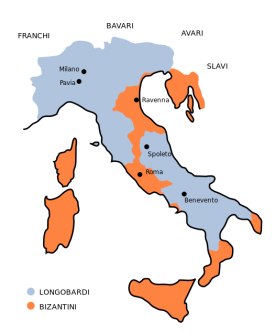
This weakness invited the attention of barbarians outside the empire, and in 568, a Germanic tribe called the Lombards crossed the Alps into the plains of northern Italy. Like so many barbarians before them, they were tempted by the great wealth of the Po Valley; once they saw how weak Roman resistance was, they pressed south into the rest of the peninsula. The Lombards captured Pavia in 572 and made it the capital of their new kingdom. Within a few decades, they had overrun most of the peninsula, and by the mid-7th century, Constantinople’s rule was limited to a few strongholds and strips of land: the regions around Rome and Ravenna, Naples, and heel and toe.
The Lombard conquest brought both cultural and political changes. The new kings expropriated lands from the old Roman patrician families and gave it to their own nobles. These men, far less Romanized than the Gothic aristocrats whose great-grandfathers had served Roman emperors, preferred to keep their own customs. This had a gradual effect on the indigenous culture, and also changed the political structure of Italy: whereas the Goths had been content to sit atop an essentially Roman system, the Lombards actively changed the laws and customs of the land.
The Emergence of the Nations
Even so, there continued to be legal distinctions made between barbarian rulers and Romans, in Italy as elsewhere in the former Western Roman Empire. Lombard kings codified and promulgated their own law codes, while indigenous Italians continued to be governed by Roman law. This was common practice throughout post-Roman lands. The Burgundian Kingdom in southeast Gaul, for instance, issued two law codes: one for Burgundians, another for their Roman subjects, largely based on Roman law. Likewise in Spain: the law codes of the Visigothic kingdom only applied to Visigoths, while all others continued to be governed according to their ancient law. Only in northern Gaul did barbarian law become the law of the land from an early date: the Salic code of the Franks applied to their Gallo-Roman subjects, even if they were mostly left to administer local affairs according to their own custom.
This distinction between rulers and ruled was erased over time, however, starting especially in the 7th century. During this span, Romans ceased to be treated as a separate class in all the barbarian kingdoms of the west. By mid-century, all subjects of the Merovingian kings in northern Gaul were considered Franks—Romance-speaking proto-French, in other words. Likewise in Spain, where King Recceswinth’s law code of 654 abolished any legal distinctions among his subjects, declaring them all Spanish. In Italy, subjects of the Lombard crown were considered Lombards by the 8th century, to the extent that the name became interchangeable with “Italian”.
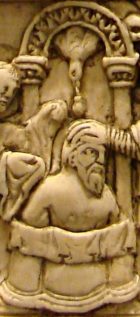
Part of what had separated barbarian rulers from their Roman subjects was religious difference. Burgundians, Visigoths, and Lombards had all been Arian Christians, followers of an early heresy that rejected the Trinity and broke with mainstream Christianity at the Council of Nicaea in 325. This created a distance from their subjects, who almost universally followed the Nicene confession upheld by the Church of Rome. The barbarians were always a minority in the lands they ruled and eventually found that converting to Roman Christianity made it easier to manage their subjects. The Burgundians converted at the beginning of the 6th century, the Visigoths towards its end; the Lombards were the slowest to convert, doing so in a long process over the seventh century. The Franks were the only major Germanic kingdom to convert directly from paganism to Nicene Christianity, which probably also explains why they were the quickest to treat their Roman subjects as Franks. For the others, legal and cultural fusion followed a few decades after their conversion.
Once the barbarians allowed themselves to be swayed by Roman custom, they began exerting a stronger cultural influence on the Romans. They adopted Roman Christianity and the Roman language, after which they began treating their subjects as fellow Germanics; once that happened, their subjects more readily accepted Germanic customs and institutions—it was a centuries-long pacing-and-leading experiment. Across the west, proto-national cultures emerging out of this synthesis subsumed Roman identity and institutions. Such was the true end of Rome in the west.
Marking the End
In this broader perspective, 476 seems like a somewhat arbitrary date for the end of the Western Roman Empire. In several real senses it was not: formally, as rule of the west by a Roman emperor; practically, as rule by a non-puppet western emperor; informally, as the persistence of Roman institutions and identity. The one way in which that date was truly meaningful was the end of self-sustaining Roman rule in Italy.
A people’s culture and civilization can be sustained by a state, but are not one and the same with that state. While Roman political structures had been crumbling for centuries, Roman civilization more-or-less endured in the west for at least a century after 476. Civilization is too abstract a concept to delimit with strict dates, but in the Roman case, its end certainly began around the year 572 with the founding of the Kingdom of the Lombards. That marked a real end to Eastern Roman political dominance and inaugurated the active transformation of Italian culture. Although Roman identity persisted for at least a century more, it became steadily weaker.
Nevertheless, the triumph of the Lombards was made possible by the political collapse a century before. For that reason alone, the overthrow of Romulus Augustulus did truly mark, if not the end of Roman civilization in the west, the beginning of its final destruction. From then on, its destiny was out of its own hands, determined by barbarian kings and emperors in Constantinople. So while the year 476 does not tell the whole story, it is as good a date for the end as any other.
